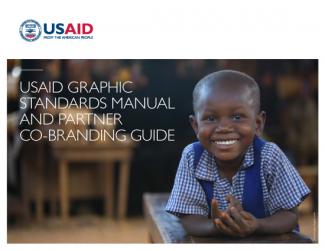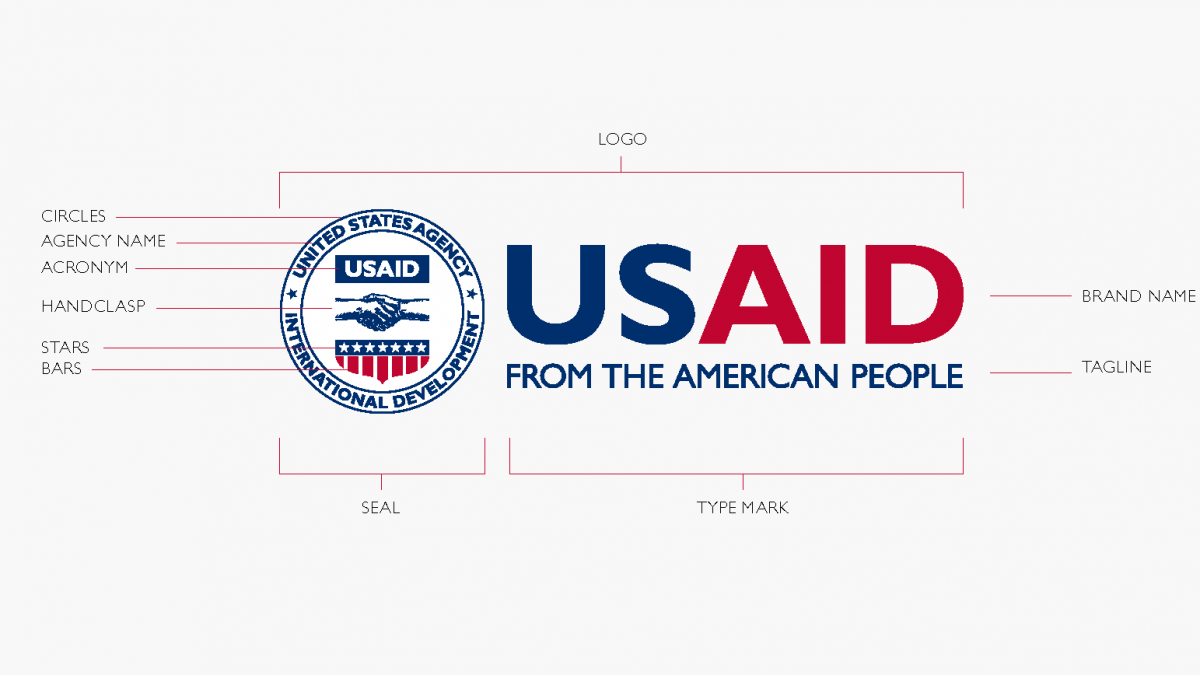USAID’s brand is more than a logo. It reflects the unique values and principles of the Agency to a worldwide audience. And, it represents the goodwill of the American people in providing assistance to those in need. We have all “earned” our brand by doing hard things well, often in the most challenging environments.
We all have an important role to play in amplifying and protecting USAID’s brand. Whether we are a mission director, contracting officer (CO), agreement officer (AO), program specialist, implementing partner, or play another key role, the work we do each and every day contributes to our brand.
This Graphic Standards Manual replaces and updates the guidance released in 2005. It provides instructions on how to best utilize our brand to communicate across a wide range of communications channels. It provides standards, templates and resources to ensure our brand is displayed in a consistent manner that clearly communicates that our assistance is From the American People. To get the most value out of this manual, there are several key facts to know.
Our Branding Policy Is Mandated by Congress
This guide implements USAID’s statutory requirements to mark programs overseas as American Aid. They govern in the following order: Section 641 of the Foreign Assistance Act of 1961, as amended; implementing regulations, now found at 2 Code of Federal Regulations (CFR) 700.16, “Marking”; and Agency policy and guidance, ADS 320 Branding and Marking. In case of any conflict between this guide and USAID’s statutory, regulatory or ADS guidance, those authorities, in that order, govern. Guidance on “branding and marking” is issued by the authority of ADS 320, and specifically 320.2.f, under which the USAID’s Senior Advisor for Brand Management in the Bureau for Legislative and Public Affairs (LPA) is required to develop and maintain the Agency’s internal and external branding policy directives and required procedures.
USAID Is Exempt From Visibly American Guidance
On March 23, 2012, the U.S. Department of State issued Cable 13526, commonly known as “Visibly American.” This cable issued a moratorium on new logos being created to raise awareness of programs and initiatives funded by the Department and carried out by embassies and implementing partners overseas. Instead of new logos, the Department supported the use of the most recognizable symbol of the United States, a standard rectangular flag. This guidance does not apply to USAID. Paragraph 12 of the cable states: “This guidance does not apply to USAID programs, which have their own marking regulations, whether USAID implements these programs with its own funding or with Department of State funding.”
Please consult your operating unit’s Resident Legal Officer or Office of General Counsel backstop if issues arise over interpretation of the “USAID exception.”
Branding Follows Funding
Decisions regarding the branding of a program depend on how it is funded. There are two major types of USAID-funded programs and projects to be aware of as you oversee implementation of our graphic standards.
Acquisitions: These are services and products that USAID acquires to support our mission. Generally, acquisitions take the form of contracts, with USAID providing 100 percent of the funding. See section 3.0.
Assistance: USAID works with many partner organizations. We assist their work by providing partial or full funding of a project or program through a grant or cooperative agreement. See section 4.0.
For questions on other types of USAID-funded programs, please refer to ADS 320.


